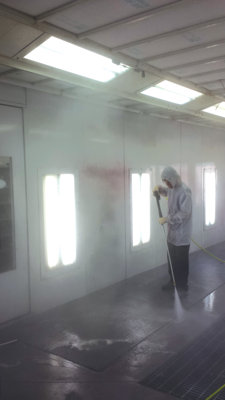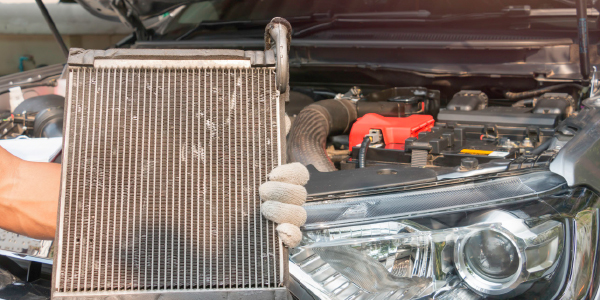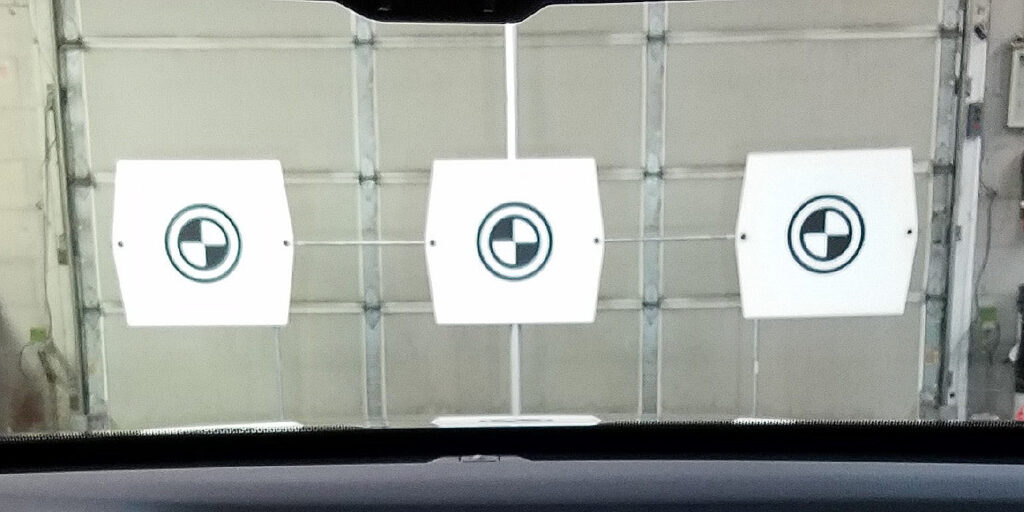By Jason Stahl, editor of BodyShop Business
You know what happens when you don’t keep up with the dishes, right? You chow down with your family and lay four dirty dishes in the sink, reasoning, “It’s only a few, I’ll get to it later.” And then, of course, you don’t get to it later, one day turns into one week, and the pile of dishes looks like the Leaning Tower of Pisa. Whereas one person could have done the job of cleaning four dishes, now the whole family has to be enlisted in order to snuff out the mess in a reasonable amount of time.
It’s the same principle with a spraybooth. If you don’t have a set, regular cleaning schedule, the grime will pile up and make the job even more undesirable and difficult when it finally comes time to do the task. Or you may just decide to forgo it even longer because you can’t stomach the amount of work it will take to get it back to new.
Standard Procedure
Angelo DiTullio knows how bad it can get. That’s why the assistant vice president and regional operations manager of Rocco’s Collision Centers has made cleaning the booths (and the rest of the shops) a standard operating procedure that occurs on a regular basis.
“Like anything else, you have to make it part of your culture because, if you wait for the right moment, the right moment will never come,” says DiTullio. “You will always be busy and are always going to have cars that need to be painted. You have to basically make it a law and say, ‘This is how we operate.’”
So what’s the law at Rocco’s? The booths get cleaned the first Monday of every month. That means they get powerwashed, have their filters changed and get remasked for overspray. On a weekly basis, painters change the floor filters, clean and sweep out the booths, clean the paint rooms and change the paper on the mixing tables. And then there is follow-up.
“Every store manager has to send a text to [Mark Cipparone, Rocco’s CEO] and myself letting us know the booths have been cleaned so we’re all on the same page,” DiTullio says. “Sometimes it gets crazy busy and it’s an easy excuse to say you didn’t get to it. But that’s why we set it up this way so everybody keeps on that mission and always takes care of it.”
Cleaning the booths isn’t assigned to specific people; at Rocco’s, cleaning is looked at as a team effort. If there’s only one painter at a shop, he will be responsible for his booth and paint room. In the shops where there are multiple painters, they will share the duty.

“It’s part of their job,” says DiTullio. “It’s set in stone for the first Monday of every month, so everyone knows what’s going to happen that day.”
Even though it’s part of the culture now, DiTullio still sets up the regular booth cleaning as an automatic calendar event in the company’s email system as a reminder to managers.
“This is because we do get busy, and sometimes you might forget,” he says. “If Friday was a slow day, they might have done it then, but they know that as long as it gets done by that first Monday, they’re good.”
Although DiTullio has no physical documentation that keeping a sparkly clean booth has resulted in fewer redos and comebacks, logic says less dirt and grime leads to a more dirt-free paint job.
“We absolutely buff less, run into less problems and have less redos by keeping on top of that maintenance,” he says.
But redos aside, another reason it’s critical to keep the booths clean at Rocco’s is because every customer gets a tour of the shop.
“Having a booth that you’re painting a lot of work in, you have overspray that gets on the walls and filters and looks crummy and becomes embarrassing to the point where you don’t want to bring someone in the booth to show it to them,” DiTullio says.
So how does the process go? They take out all the filters and don’t powerwash any higher than the walls, so the ceiling filters can stay. They’ll pull the exhaust filters out of the floor and pull the grates out and set them somewhere to get powerwashed as well. The cleaners wear boots and gloves and try not to get wet. Each booth takes two to two-and-a-half hours to clean.
But it’s not just the booths that get cleaned. Every Friday, the rest of the shops get tidied up, too. Around 3:30 or 4 p.m., crews throw away all the parts they don’t need, sweep and powerwash the entire shop from the walls down.
“As busy as we are, parts and boxes can build up very quickly, and if you don’t take that time to clean the store every week, it shows,” says DiTullio.
In and Out
The painters at Valley Motor Center Autobody in Van Nuys, CA, are expected to tidy up their booths every week, according to General Manager Mike Towney. This involves sweeping, washing down the walls, wiping down hoses and any shelves that might collect dust, and cleaning any overspray off the glass. Floor filters are also changed out.
Heavy-duty maintenance, however, is left to an outside company that performs it on a monthly basis.
“They do full-service as far as building booths, relocating booths, permitting booths as well as servicing and maintaining them,” says Towney. “They go through and deep clean everything, including the vents and fans, and replace all the filters.”
The idea, Towney says, is to prevent a problem before it happens. With four booths to maintain, it’s not cheap, he admits, but he feels it’s worth it.
“If we tried to do it ourselves, there are things we would miss,” he says.
The overall goal of the weekly cleanings and monthly maintenance is to achieve consistent airflow around the car, Towney says.
“If [the booth] is struggling to work and you have more overspray floating in the air for a longer period of time, you have more opportunity for lint to attach itself to debris and land on the car. Cars don’t necessarily straddle the vents or grates at the bottom equally. You need the best airflow from top to bottom to push out all overspray immediately. So if your filters are pretty clogged, it slows that down and you have the potential for more impurities and thus you will have to buff more on the back end.”
While Towney admits he doesn’t have a standard procedure to verify the cleaning has been done, he trusts it has because of what’s at stake.
“I will periodically ask the painters if it has been done, but I’m not that rigid on that because it’s in their best interest to keep the booths clean because they will spend less time correcting problems, and they know that.”













